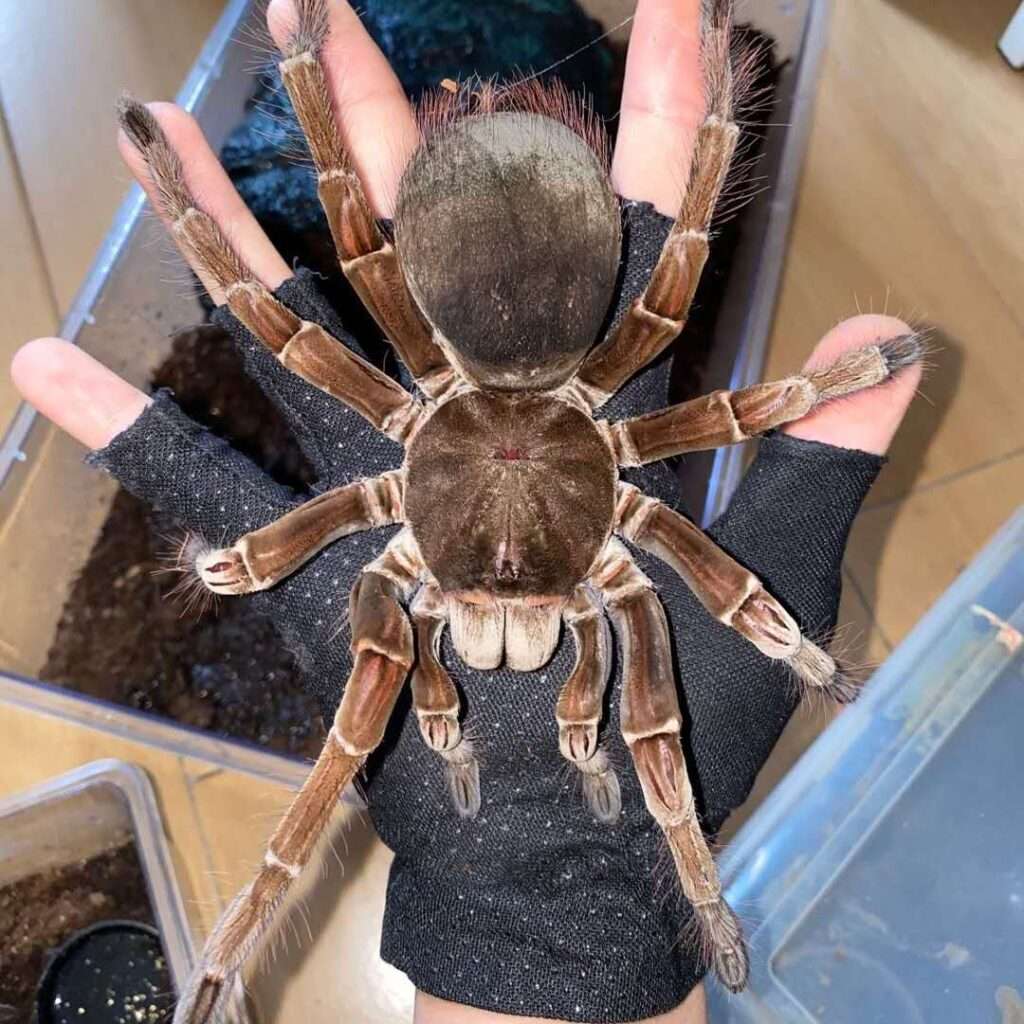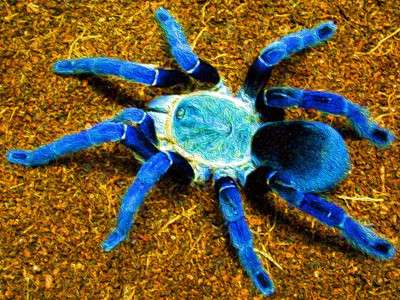
A species of tarantula in the Theraphosidae family is called Theraphosa stirmi. The burgundy goliath bird eater is the name given to it.
Distribution
In tropical South America’s Guyana and Brazil, this species can be found. The constant trade winds coming in from the Atlantic Ocean have made coastal Guyana’s climate unusually pleasant for a low-lying tropical region.

Description
The carapace of Theraphosa stirmi can grow as long as 40 mm (1.6 in) and as wide as 37 mm (1.5 in). A male’s fourth leg, which was the longest, measured 110 mm in total length (4.3 in). These large, heavy-bodied spiders range in color from rusty brown to deep burgundy-brown to dark brown, with white lines on the legs and reddish setae on the legs and abdomen. Male adults do not have tibial apophysis or mating spurs. Pink tarsi are present on the first two pairs of legs of spiderlings and juveniles.
Diet
Great predator that eats its victim whole. Adults can consume several adult dubia roaches or more than a dozen adult crickets each week.
Behavior
These tarantulas exploit abandoned rodent burrows or dig extensive tubes under the ground to conceal themselves. A nocturnal and crepuscular species is very aggressive. This species may hiss when threatened to alert predators, or it may rear up and show its fangs. This spider’s other method of self-defense is to flick irritant hairs from its abdomen with its back legs. These micro barbed hairs can irritate the skin and, when breathed in, the nose and throat. Finally yet importantly, it will lash out with its fangs. It consumes any size of suitable insect in captivity, including giant grasshoppers, cockroaches, and crickets.
Lifespan
Males typically only live to 4 years; however, females can live up to 20 years.
Conditions to keep as Pet
The substrate should be slightly wet, but not drenched. The enclosure should have a greater humidity level, but ventilation is still essential to prevent the air from becoming stale. For this species, a temperature range of 75 to 84 degrees Fahrenheit is ideal, and little temperature changes won’t hurt your tarantula.
Table





